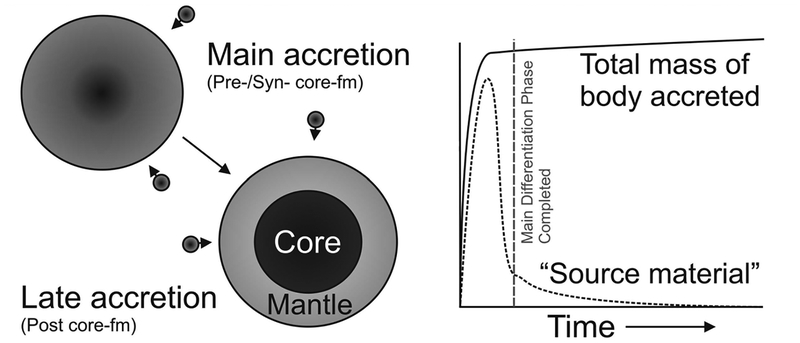Figure 2.
Schematic diagram illustrating the distinction between core-formation accretion and post-core formation accretion, also known as late accretion (or, in some cases, a ‘late veneer’ for Earth). During the main phase of accretion, in the first 1–2 Ma of Solar System history, as the total mass of the body is predicted to increase rapidly, metal–silicate equilibration is expected to draw-down the HSE into a metallic core. After the main differentiation phase has completed and core formation ceases, late accretion commences, with a proportionally smaller predicted fraction of ‘source material’ being contributed into the silicate crust and mantles of planetary bodies. In the most general sense, the amount of late accretion added to a differentiated planet will be a function of cessation of metal–silicate equilibration (the main differentiation phase).

